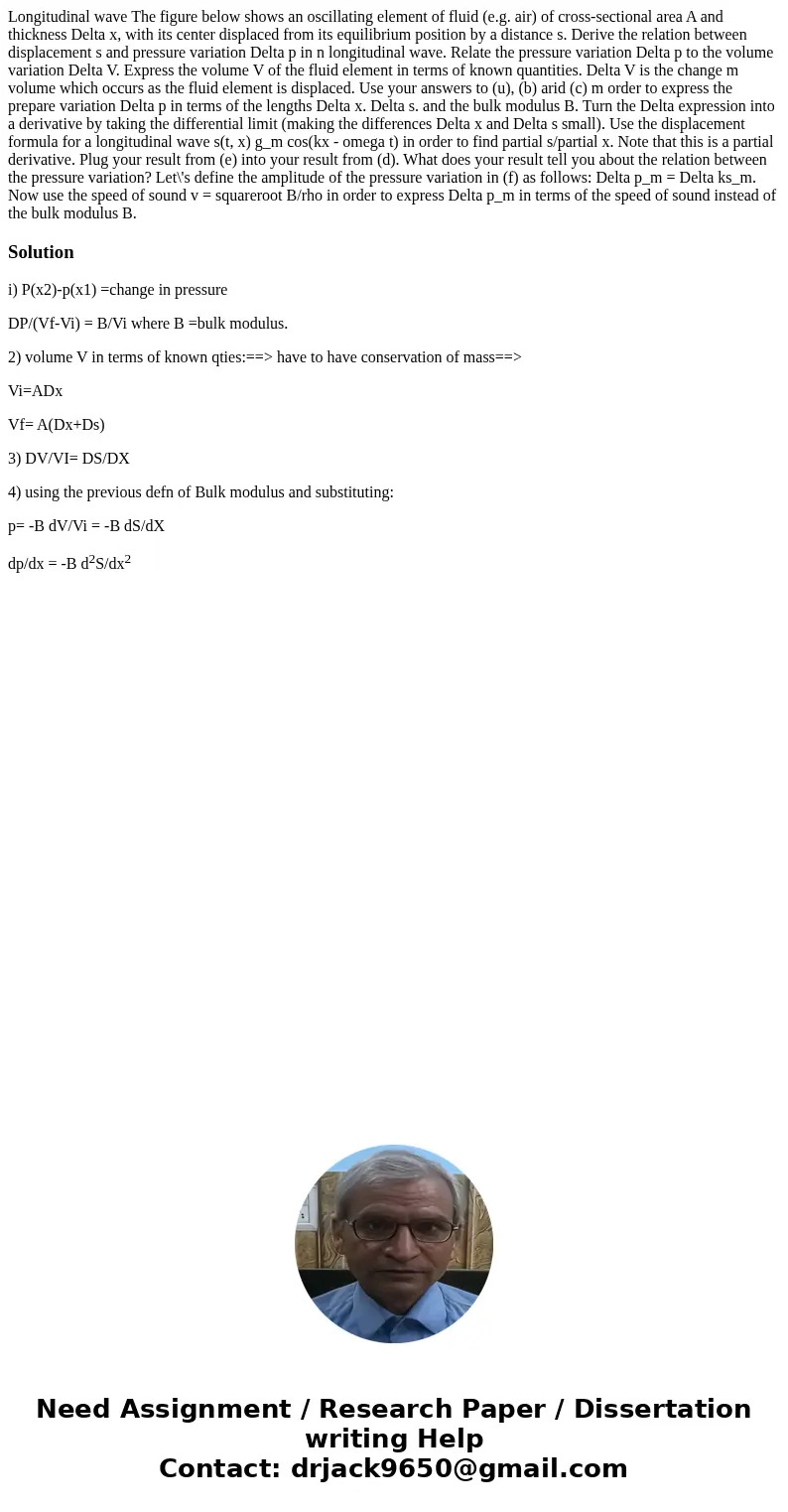Longitudinal wave The figure below shows an oscillating elem
Longitudinal wave The figure below shows an oscillating element of fluid (e.g. air) of cross-sectional area A and thickness Delta x, with its center displaced from its equilibrium position by a distance s. Derive the relation between displacement s and pressure variation Delta p in n longitudinal wave. Relate the pressure variation Delta p to the volume variation Delta V. Express the volume V of the fluid element in terms of known quantities. Delta V is the change m volume which occurs as the fluid element is displaced. Use your answers to (u), (b) arid (c) m order to express the prepare variation Delta p in terms of the lengths Delta x. Delta s. and the bulk modulus B. Turn the Delta expression into a derivative by taking the differential limit (making the differences Delta x and Delta s small). Use the displacement formula for a longitudinal wave s(t, x) g_m cos(kx - omega t) in order to find partial s/partial x. Note that this is a partial derivative. Plug your result from (e) into your result from (d). What does your result tell you about the relation between the pressure variation? Let\'s define the amplitude of the pressure variation in (f) as follows: Delta p_m = Delta ks_m. Now use the speed of sound v = squareroot B/rho in order to express Delta p_m in terms of the speed of sound instead of the bulk modulus B.
Solution
i) P(x2)-p(x1) =change in pressure
DP/(Vf-Vi) = B/Vi where B =bulk modulus.
2) volume V in terms of known qties:==> have to have conservation of mass==>
Vi=ADx
Vf= A(Dx+Ds)
3) DV/VI= DS/DX
4) using the previous defn of Bulk modulus and substituting:
p= -B dV/Vi = -B dS/dX
dp/dx = -B d2S/dx2

 Homework Sourse
Homework Sourse